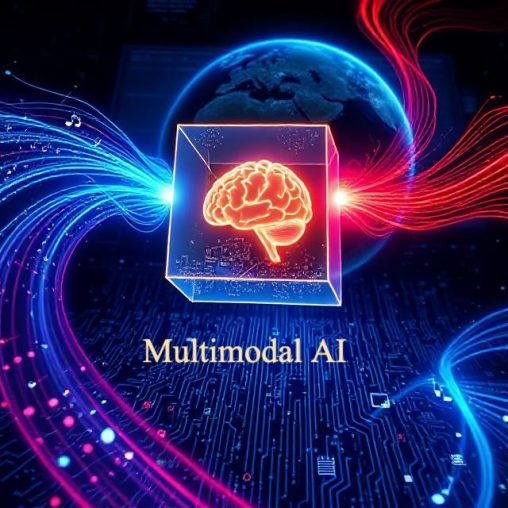Multimodal AI: How It’s Shaping Generative Content and Market Movers
Artificial intelligence is evolving at an unprecedented pace, and the latest breakthrough is multimodal AI — a branch of generative AI capable of understanding and generating content across multiple formats, including text, images, audio, and video. Unlike traditional AI systems that handle a single data type, multimodal AI integrates all forms of information to create richer, interactive digital experiences.
This technology marks a major leap in AI innovation for 2025, enabling seamless collaboration between humans and machines. A single AI model can now read a document and summarize key points in text. Additionally, it can generate visuals, create an audio narration, and produce a short video explanation. Consequently, this approach is redefining how we create and consume content online.
Why Multimodal AI Is Trending
The surge in interest around multimodal and generative AI comes from its ability to merge creativity, speed, and efficiency. As a result, it’s fueling a new wave of AI content generation tools and productivity platforms that simplify multi-format creation.
Richer Experiences:
Moreover, platforms can now offer posts that combine visuals, audio, and video with text, creating a more immersive and accessible user experience.
Creator Efficiency:
Instead of manually producing multiple types of content, creators can use AI agents and AI storytelling tools to generate everything from blog visuals to narrated videos in minutes.
Monetization Opportunities:
Businesses are experimenting with AI-powered tutorials, interactive guides, and digital experiences that combine multiple media formats, allowing premium content monetization.
Technological Leap:
These systems represent the next era of AI, where a single multimodal AI model can understand complex interactions between text, sound, and imagery — a critical advancement for AI in education, entertainment, and enterprise solutions.
Applications Across Industries
The reach of multimodal AI extends across industries:
Media & Marketing: Brands leverage AI video tools and AI image generation platforms to produce creative campaigns faster than ever.
Education: E-learning platforms integrate AI content generators to produce lessons, visuals, and quizzes instantly.
Entertainment & Storytelling: Game designers and filmmakers use AI storytelling models to craft multi-layered, immersive experiences.
Business & Productivity: Startups and enterprises deploy AI agents to automate presentations, voiceovers, and reports.
Why It Matters
For startups, creators, and digital platforms, multimodal AI isn’t just a technical innovation — it’s a strategic growth driver. Furthermore, it enhances engagement, streamlines production, and opens new monetization pathways.
As the demand for interactive AI-driven content grows, companies adopting these technologies will gain a decisive edge. This reflects a broader market shift from single-purpose AI tools to versatile, next-gen AI systems that redefine how we produce, consume, and invest in digital content.
AI Market Movers Leading the Charge
Investors are closely watching the AI market movers shaping this revolution:
Nvidia (NVDA): Powers the multimodal AI boom with GPUs essential for training generative and multimodal AI models.
Microsoft (MSFT): Embeds multimodal AI across Copilot and Azure AI, boosting enterprise productivity and cloud dominance.
Alphabet (GOOGL): Its Gemini models span text, images, video, and speech — positioning Google as a leader in AI innovation 2025.
SoundHound AI (SOUN): A rising player specializing in voice, vision, and language AI, representing small-cap exposure to the AI revolution.

